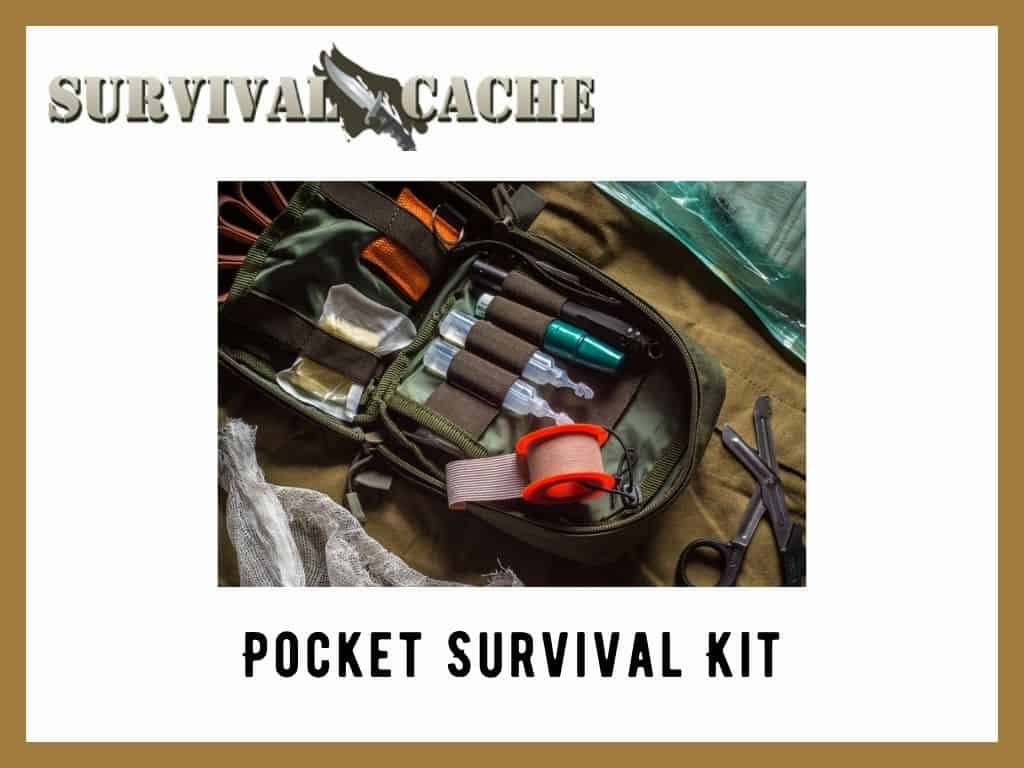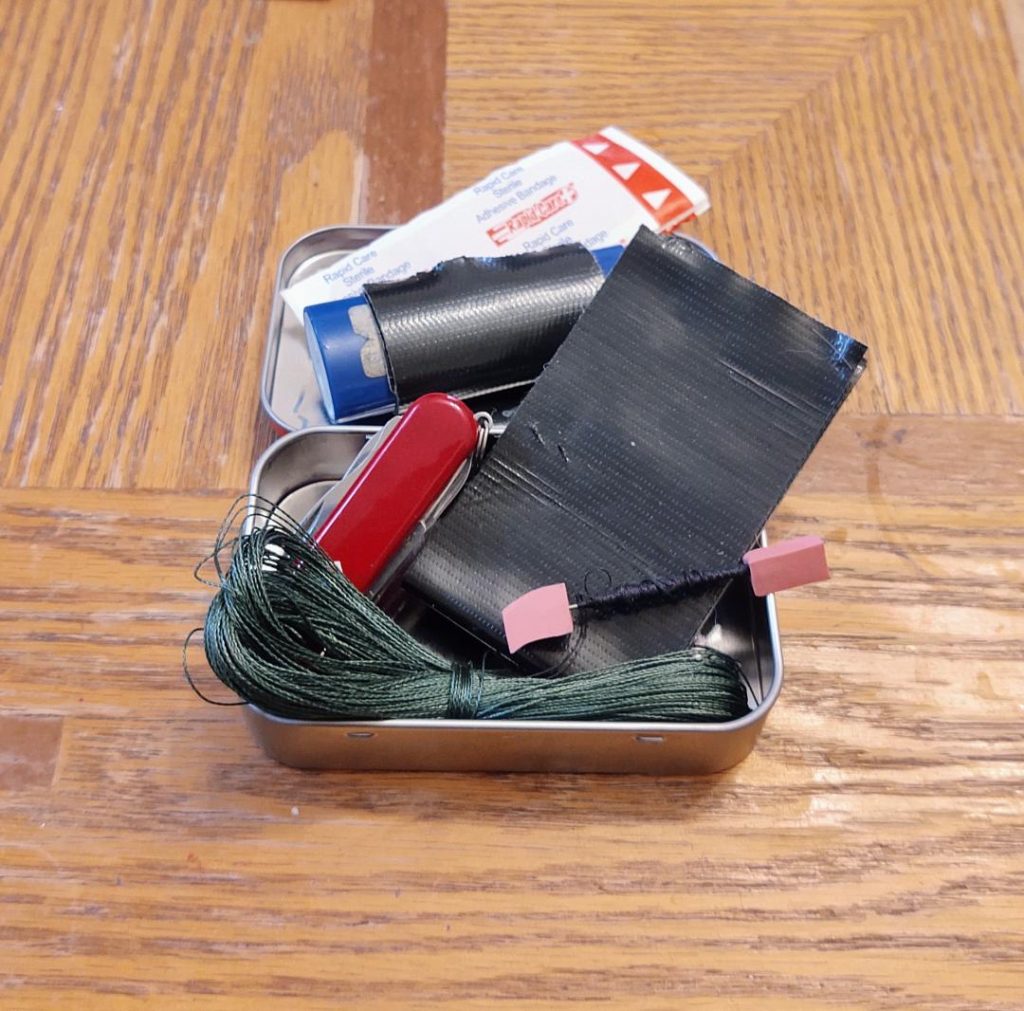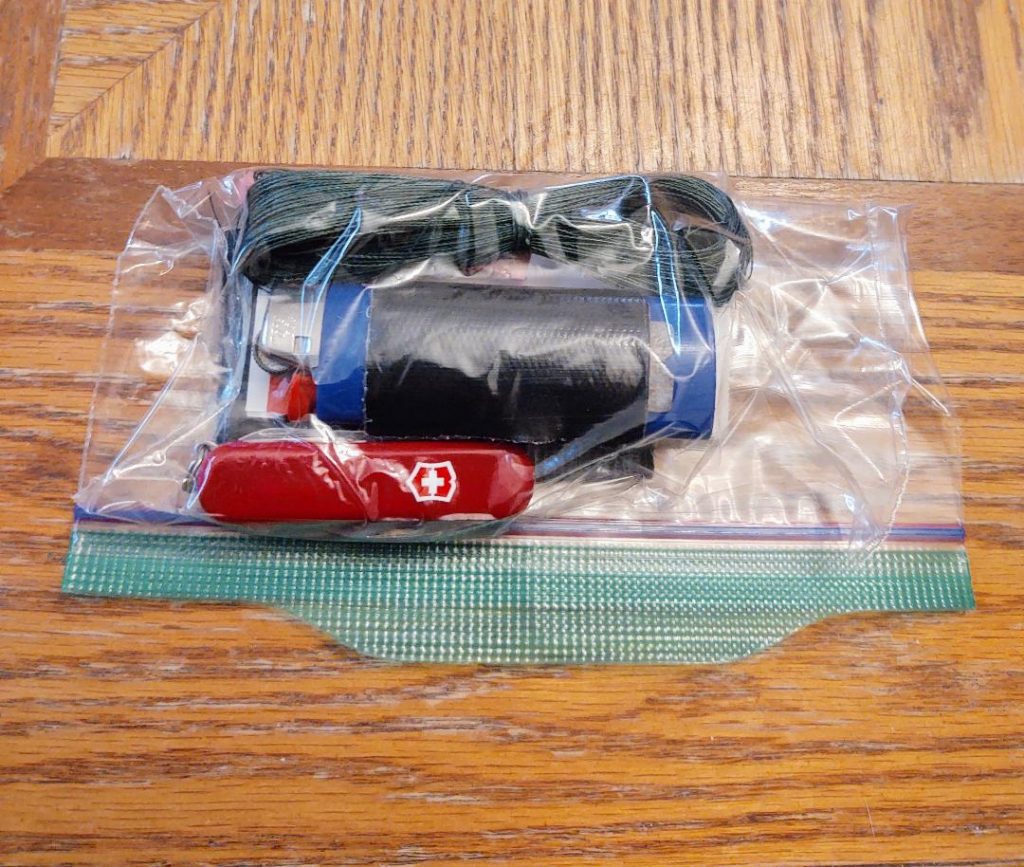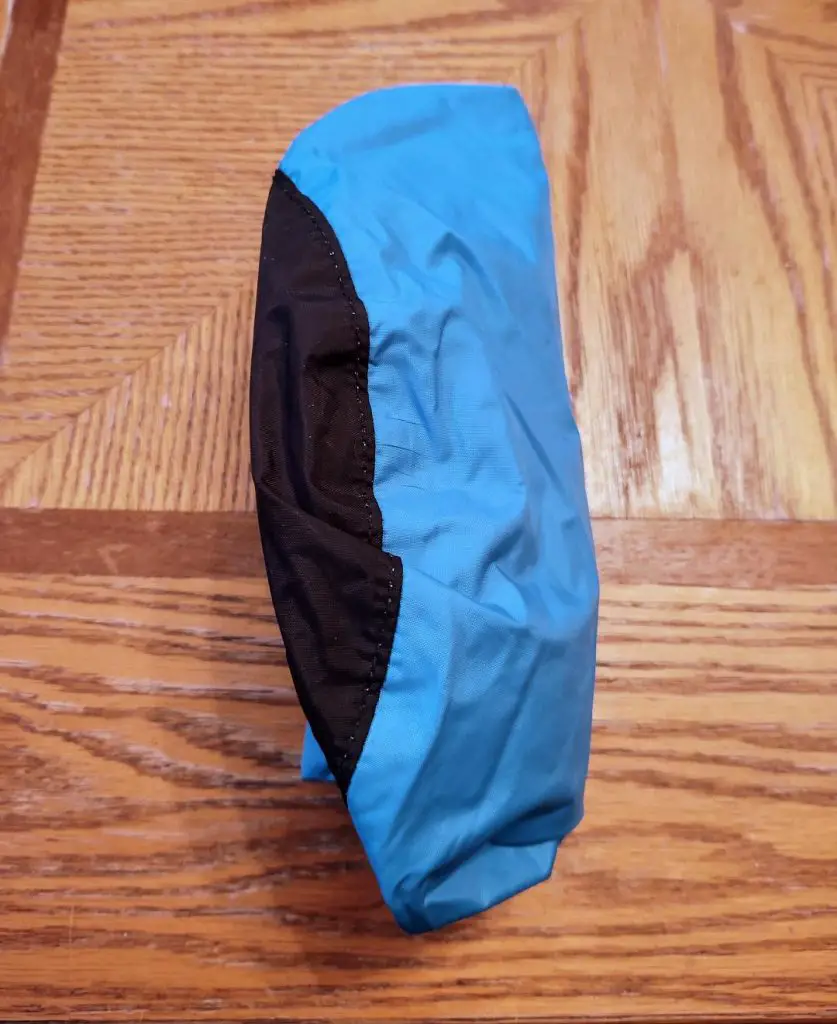We cannot be prepared for everything all the time. It simply is not possible.
But we can do our best.

In situations where carrying a bunch of supplies on our back is not socially acceptable, a pocket survival kit can be the perfect way to fill that gap while at the same time serving as a backup to other supplies.
If you are unfamiliar with a PSK then you have come to the perfect place to learn what they are and how to create one.
So, sit back, take some notes, and learn all about making your very own pocket survival kit.
SKIP AHEAD
What is a Pocket Survival Kit?
A pocket survival kit or PSK for short is exactly what it sounds like.
It is a small container of emergency supplies that can be easily and discreetly carried in a pocket.
Reasons For Having a Pocket Survival Kit
First things first. A PSK is by no means a replacement for a proper loadout of survival gear.
They are meant to be carried when other gear is unavailable or as a backup to primary gear options.
Other than using a PSK as a backup, the main reason to have one is that it allows a person to carry a small number of emergency supplies all of the time.
In situations where carrying a full pack of gear might warrant some sideways looks, a PSK can be discreetly carried and can give you a leg up until additional supplies can be acquired.
Because a PSK is so small and lightweight it is a great way of getting kids involved in the outdoors and emergency preparedness by allowing them to carry functional items. They will be also be excited if you let them help choose items and build their own kit.
How to Create a Pocket Survival Kit
What goes into a pocket survival kit will depend on your abilities, the environment you operate in, and the type of container.
Abilities
I cannot stress enough that you need to be familiar with the gear you choose to pack in your PSK.
Using a piece of gear for the first time when an emergency happens, is not the time to be figuring out how to use it.
By practicing regularly with the contents of the kit your abilities to use them will be greatly improved when it matters most.
Environment
While there are universal items in most survival kits, the items you choose should reflect your surroundings.
For example, a water key would be a great item to carry in an urban environment but would not be all that useful in the woods.
Container
There are a lot of different containers that can be used for a PSK.
The type of container that is used will depend on the size of items packed, the number of items in the kit, and personal preferences.
But generally, there are two types of containers to choose from, a hard container and a soft one.
A hard container will provide the most protection to the items inside and will be more durable. But they are ridged and can be uncomfortable to carry in a pocket.
A soft container will be much more comfortable to carry in a pocket but may not provide as much protection to the kit’s contents.
Pocket Survival Kit Items
Since a PSK is small, not a lot of items can be put into them. Because of this, it is important to thoroughly think through every item that is used. The best items are those that can serve multiple purposes.
Below are examples of hard as well as soft container kits.
Hard Kit Contents
For this kit, I chose to use an Altoids tin because they are affordable, easily fit in most pockets, readily available, and are quite popular to use for this purpose.

A few other options for hard containers would be pocket-sized first aid kits and medication pill bottles just to name a few.
Before packing the items in the tin, I like to put them into a sandwich-sized resealable plastic bag. This acts as a water-resistant barrier as well as a secondary container.
- Braided fishing line. This type of fishing line is great because the line doesn’t tangle up into itself and has high tensile strength while remaining small in diameter. Works great for fishing and all other cordage needs.
- Fishing Hooks. Used to catch fish and in trapping. It can also be used for some short term gear repairs.
- Butane Lighter. The quickest way to get a fire going and can be used as a light source.
- Duct tape. A strong material that is great for gear repair and can be used to help start a fire.
- Signal whistle. An easy and effective way to signal for help or to communicate with others in your group.
- Small knife. One of the most important tools to have. I chose a Swiss Army Knife for my PSK because its small size fits well in the container and other than the knife, it offers a few additional tools.
- Resealable plastic bags. Using one of these to wrap all of the items helps to keep them dry. An extra bag can easily fit in the kit and can be used for a general collection bag, water collector, and even to help start a fire.
- Fire Tinder. Use whatever tinder you prefer but jute twine, cotton balls, and dryer lint work exceptionally well.
- Small Needle and Thread. A small needle and approximately ten feet of sewing thread will not take up much space and comes in handy for gear repair.
- First Aid. It is always a good idea to have a couple of band-aids and antibiotic cream to make sure those small cuts do not turn into big-time infections.
- The Tin. The interior of the tin is rather reflective and could be used as a signaling device.
Soft Kit Contents
Resealable plastic bags are among the most affordable and readily available soft containers around.

They come in a variety of sizes and help to keep the contents of the kit waterproof.
Regular sandwich bags can be used but they are quite thin and will not hold up to being taken in and out of a pocket.
You do not want all the contents falling out of a torn bag so it may be worth spending a little extra money on a more durable bag, like a heavy-duty puncture-resistant bag.
Other options would be small zippered pouches like coin bags or a dry bag.
Dry bags are quite durable and the easy to close pouch will keep the contents of the bag nice and dry.

The dry bag I am using is rather large but once it is rolled up it still fits comfortably in a coat pocket.
I am using all of the same items from the hard container to put into this soft container.
Here is the list again but with a few modifications.
- Braided fishing line.
- Fishing Hooks. Place a small piece of rubber or pencil eraser on the ends of the hooks so that they do not puncture the container.
- Butane Lighter.
- Duct tape.
- Signal whistle.
- Small knife.
- Resealable plastic bags.
- Fire Tinder.
- Small Needle and Thread. Just like the fishing hooks place a small piece of rubber on the sharp ends.
- First Aid.
Extra Ideas!
Here are few extra ideas for small items that did make it into the above kits but that you may like in yours.
- Keychain LED Light
- Water Purification Tablets
- Button Compass
- Miniature Ferrocerium Rod
- Miniature Magnifying Glass
- Nail Clippers
- Keychain Multitool
- List of Emergency Contacts
- Pocket Size Survival Guides
Pros
- Allows for emergency supplies to be carried almost anywhere
- Can be carried discreetly
- Lightweight and compact
- Items can be easily swapped out which makes the kit highly personalized
Cons
- Only provides a small amount of gear
Wrapping It Up
In our daily lives, it can be difficult to carry everything we would like to be prepared.
A PSK is a perfect way to discreetly carry gear and keep it organized whether you are on the trail or walking down Mainstreet.
No matter where we are, having even the smallest amount of items can prove to be lifesavers.
Do you have a pocket survival kit? Sound off in the comment section below and let us know about it. Thanks for reading and stay prepared!

